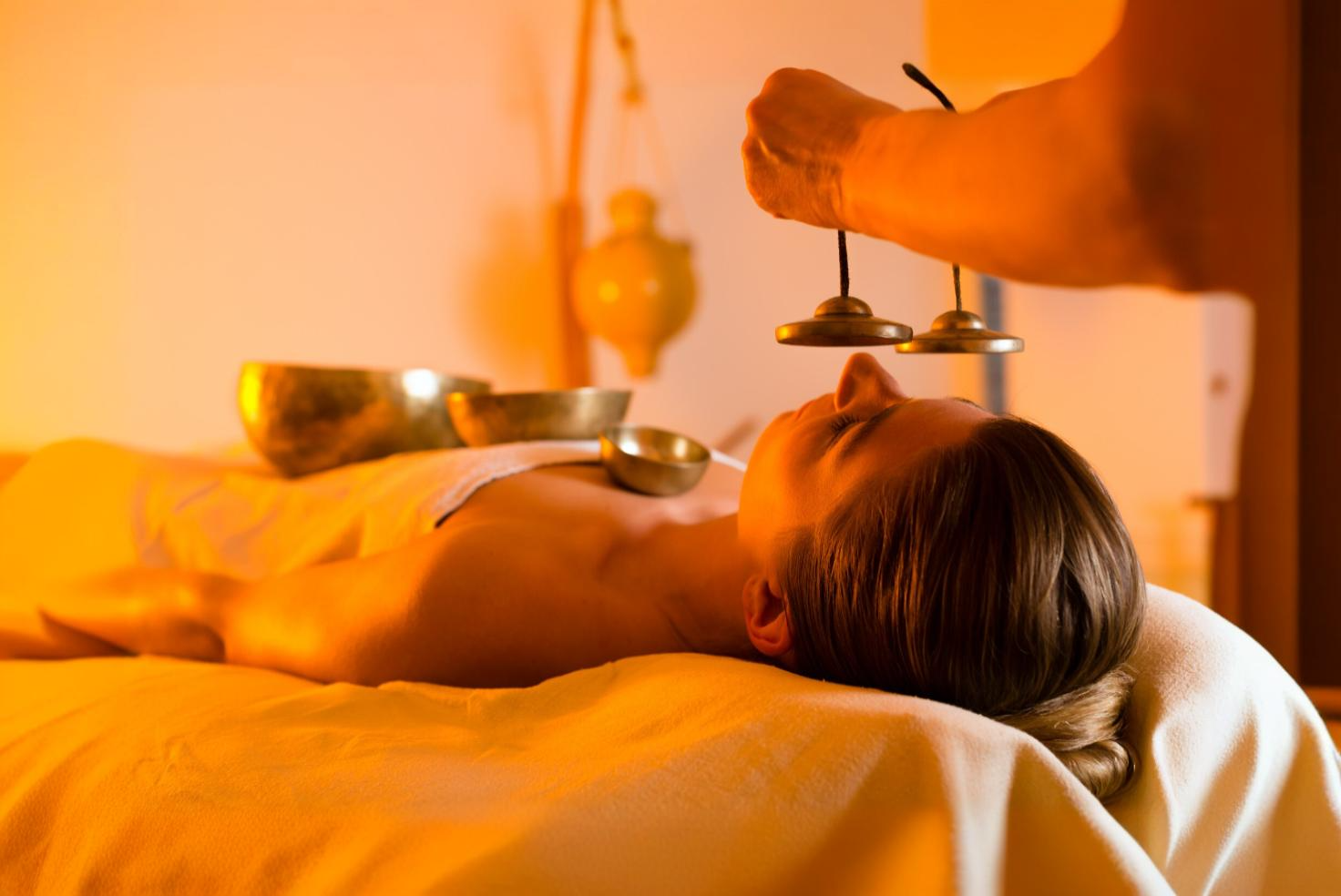Sarvanga Abhyanga (Full Body Massage)

Sarvanga Abhyanga 🧍(Full Body Massage) – Procedure, Benefits & Indications
Sarvanga🌿💆♀️ means whole body and abhyanga means massage. Abhyanga can be roughly translated as ‘oil massage.’
This comes from the sanskrit word ‘anga’ meaning movement and the prefix ‘abhi’ meaning ‘different, against or contrary.’ A synonym of the word is ‘abhyanjana’ meaning ‘to smear,’ ‘to anoint oil’ or ‘unctuousness’ (oily, greasy, soapy.) Sarvanga Abhyanga is a process in which massage is done to the whole body with the help of medicated oils and ghritas as a preventive and curative therapy. Warm oils deeply penetrate into the cells and release physical, mental and spiritual toxins, hence sarvanga abhyanga works as detoxifying as well as healing cellular therapy. The massage is done in the direction of arterial blood movement. This helps to improve blood circulation, provide relief from pain and stiffness, and help in de-stressing. It also helps in correcting energy (Dosha) imbalance in the body.
Abhyanga is done as a part of Panchakarma treatment. This treatment is done as a part of detoxification and cleansing. Abhyanga is an essential preparatory step of Panchakarma treatment. During the treatment, Abhyanga massage is done to prepare the body for the detoxification process. It helps to move toxins towards the gastrointestinal tract to facilitate its smooth elimination.
PROCEDURE
Firstly the patient is asked to void his bowel and bladder. Patient is advised to be calm and concentrate on self. Prescribed oil is taken in a vessel and warmed indirectly in a hot water bath. The oil is then taken by the therapist in the palm is applied over the body in seven different positions. Pressure applied to the patient should be according to the patient’s comfort. After the massage, the patient is given rest for about 5 minutes followed by steam bath. Abhyanga, an Ayurvedic oil massage, is a holistic treatment performed in three stages to promote overall health and well-being:
Preparatory Phase (Purva Karma): This initial stage involves preparing the body early in the morning. After completing personal hygiene rituals such as brushing teeth, clearing the bowels, and taking a bath, the body is ready for the massage.
Application Phase (Pradhana Karma): In this stage, the oil is gently warmed and then applied generously over the body. The massage is conducted using light pressure with the palms, following specific techniques suited to individual body conditions. The process includes seven different positions to ensure all parts of the body receive treatment:
- Sitting with extended legs
- Lying on the back (supine)
- Lying on the left side (left lateral)
- Lying on the stomach (prone)
- Lying on the right side (right lateral)
- Lying on the back (supine)
- Sitting with extended legs (repeat)
Post- Massage Phase (Paschat Karma): Following the massage, steam therapy is administered to induce sweating, which helps the oil penetrate deeper into the skin. A hot water bath follows to cleanse the body and remove any remaining oil.
INDICATIONS
Sarvanga Abhyanga is indicated in the following conditions:-
- Pain and stiffness in the muscles
- Paralysis
- Frozen shoulder
- Swelling or oedema in the body
- Generalized weakness
- Relaxation
- Fatigue
- Rehabilitation after injury or surgery
- Headaches
- Decreased range of motion
Contra-indications:
Abhyanga is not recommended under the following conditions
- Low agni and excessive toxins
- During pregnancy
- During menstruation
- Acute fever, chest or sinus congestion
- Open or bleeding wounds, healing scars or burns
- Spontaneous or internal bleeding
- Unexplained lumps and bumps
- After spending excess time in direct sunlight
- Directly after a heavy meal or when very hungry
- Less than 8 weeks after surgery
BENEFITS
Sarvanga Abhyanga proves to be beneficial in the following ways:- Abhyanga promotes both physical and mental relaxation. It soothes strained or overworked muscles and helps calm the mind, offering relief from stress and tension. This can be particularly beneficial for individuals struggling with depression by inducing a state of relaxation.
Research suggests that Abhyanga can lower blood pressure, thanks to its positive impact on blood circulation.
The massage involved in Abhyanga provides notable benefits for the skin, improving its health. It moisturizes, enhances texture, and can help reduce issues like wrinkles, scars, and other signs of aging.
A head massage as part of Abhyanga is effective for improving scalp health, addressing hair-related concerns, and supporting hair growth.
People dealing with back pain, muscle strain, or similar issues can find relief through Abhyanga, as it helps alleviate aches, pain, and stiffness.
Abhyanga contributes to slowing down the aging process and supports rejuvenation.
Abhyanga can have a positive effect on the digestive system, improving its overall function.
Regular practice of Abhyanga boosts energy levels, enhances physical strength, and improves mental sharpness and sleep quality.
How Abhyanga is different from the regular massages?
Abhyanga differs from other massages in that it invariably uses copious amounts of oil for massaging the body.
Unlike massage which is used for recreation and relaxation, abhyanga is a therapeutic procedure used in many health disorders. Medicated oils are used to encourage therapeutic effects on the body.




